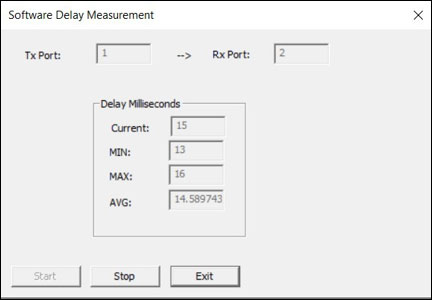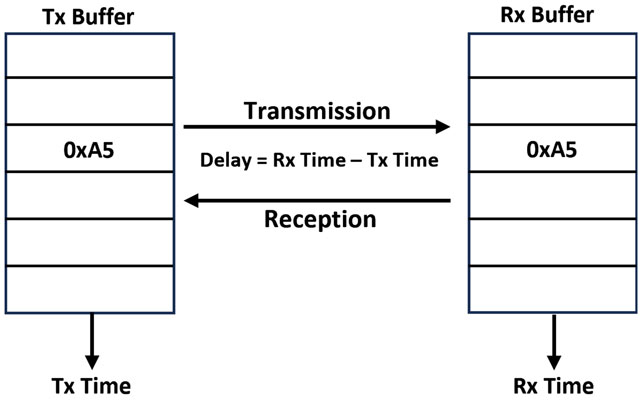Real-Time Software Delay Measurement for T1 E1 Analyzers

Overview
The Software Delay Measurement utility operates in both hardware-based and software-based T1 E1 analyzers. It accurately measures delay using the computer's precise timing by tracking a byte mark in the global buffer of a specified Tx port and monitoring when it appears in the Rx global buffer of a specified Rx port.
- The maximum measurable delay is limited to twice the global buffer size (2 seconds max)
- The tool ensures precise approximation of the transmission time by adjusting the measurement dynamically
Key Features
- Accurate Delay Calculation: Uses real-time computer clock adjustments
- Graphical Display: Continuously updates delay metrics
- Customizable Ports: Users can select any Tx and Rx ports for measurement
- Real-Time Monitoring: Refreshes delay data every 1.5 seconds
Software Delay Measurement Operation:
The Software Delay Measurement process begins with the user selecting the Tx and Rx ports and initiating the test. The system fills the Tx global buffer with zeroes before placing a marker byte (0xA5) in the next global buffer, positioned 10 ms ahead of the driver. It verifies that the driver has not yet processed the marker and records the Tx time precisely. The Rx buffer is then monitored for the marker, and once detected, the Rx time is recorded. The delay is calculated as the difference between Rx Time and Tx Time. The GUI updates the current, minimum, maximum, and average delay values every 1.5 seconds, providing real-time monitoring. The user can stop the test at any time, and the system resets the marker byte in the Tx global buffer to ensure accurate subsequent measurements.
 Back to List of T1E1 Basic and Optional Applications Index Page
Back to List of T1E1 Basic and Optional Applications Index Page
